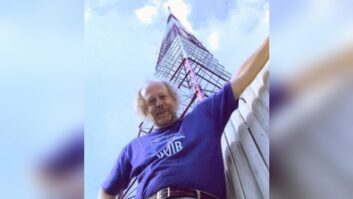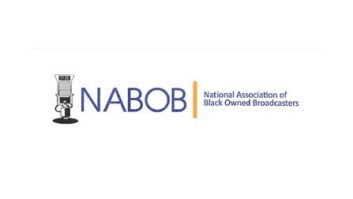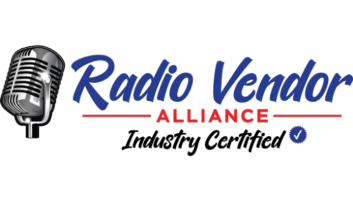In New York Dispute, Landmark Site Says No to Tower in Its Backyard
NEW YORK A tower siting dispute spanning eight years has left a radio station here with a half-constructed broadcast tower and a neighboring nature area willing to contribute financially to get rid of it. A private meeting between the parties and the FCC this fall could settle the issue.
The legal battle pits a noncommercial broadcaster against preservationists concerned about the impact on a National Historic Landmark. The final determination of this case could set a precedent for this type of siting near an historical area, experts believe.
Fordham University began construction of the tower for the school’s WFUV(FM) in 1994. It was to be 480 feet high. The partly built structure, now at 260 feet, is on the school’s Rose Hill campus in the Bronx. It sits 150 feet from the property line of the New York Botanical Garden.
School officials say tighter guidelines governing radiofrequency radiation exposure proposed by the FCC in the early 1990s prompted the new tower project. The commission adopted the new RFR rules in 1997.
Dead-stop
Construction on the tower was stopped just days after it began when Garden officials notified the New York City Buildings Department and the FCC of alleged inaccuracies in the construction-permit application submitted by the school.
The Garden claims Fordham failed to disclose the proximity of the proposed tower to the 250-acre National Historic Landmark.
“(Fordham) wrote in the application that the site area was not significant from a historical, architectural or cultural standpoint. That’s hardly the case,” a spokesman for the Garden said.
The consulting engineer who filed WFUV’s Environmental Impact Statement to the FCC in 1983, Stuart Meyer, wrote, “The site is not noted for its scenic or recreational value. Actual construction of the proposed tower will have negligible impact.”
Fordham spokeswoman Libby Schmalz said the station’s assessment was made in regard to “the site” and not the surrounding areas. She declined further comment.
Construction work was stopped with a bit more than half of the proposed tower completed. The radio station moved its antenna to the partly constructed tower in 2000 and continues to transmit from the location using special temporary authority from the FCC, operating at half of its permitted 50 kW capacity.
Garden officials claim the landmark’s beauty is lessened by the tower looming over the skyline.
Karl Lauby, vice president for communications for the Garden, said, “The tower diminishes the experience of those visiting the Garden. It also violates the National Preservation Act by undermining the Garden’s value as a landmark. Visitors who take a bird walk or forest tour are overwhelmed by the distraction of the tower.”
The Garden is open to the public. It also is a research institution dedicated to the documentation and preservation of the earth’s plant biodiversity, Lauby said.
The Garden has exhausted legal appeals in New York state courts to stop the project. The Supreme Court for the state of New York refused to hear the case on appeal in 1996, saying the garden failed to prove it would suffer any “significant economic harm” because of the project.
Subsequently, the FCC ruled that the tower would have an adverse impact upon the Garden and has held Fordham’s CP in limbo, prohibiting work on the project while it debates mitigation measures and the environmental effects the tower would impose.
“Because of the FCC’s declaration and pursuant to the National Preservation Act, an automatic federal review was triggered. Mediation had failed, so the FCC moved into a public consultation phase,” Lauby said.
‘No Tower, No Tunes’
The commission held a public hearing in New York in June to hear public comment on the matter. The forum featured eight hours of testimony from backers of both WFUV and the Garden.
“It was a bit contentious, but there was a preponderance of agreement that there should be an alternative to the current tower’s location,” Lauby said.
School officials said WFUV supporters wore T-shirts to the meeting emblazoned with “No Tower, No Tunes” to help make their presence more noticeable. They said more than 9,000 WFUV listeners signed petitions and wrote letters to the commission in favor of finishing the tower.
A formal consultation session among all sides scheduled for August was cancelled to allow for a 30-day extension of the comment period after the Garden filed approximately 1,500 pages of information, including engineering exhibits for what it believes are feasible alternative sites.
Sources said the FCC likely will reschedule the meeting for this fall and hopes to guide the parties into a compromise.
“We cannot wait forever to finish the tower. The Garden people have submitted a list of additional potential tower sites. We are evaluating the additional sites at this time,” said WFUV General Manager Ralph Jennings.
Negotiations between the school and the Garden continue, with Garden officials hoping the sides can agree on an alternative tower site.
The Garden has agreed to pay two-thirds of the cost of relocating the tower if a suitable replacement site is found. The Garden commissioned engineering studies for several sites; none of those have been acceptable to Fordham University, sources said.
Lauby said one specific site holds a great deal of potential as an alternative. Neither side would disclose its location.
“The Garden is in the process of negotiating a purchase of the property. However, that’s just one of the options we are exploring,” Lauby said.
One option the Garden would like Fordham to consider is to rebuild the antenna atop three-story Keating Hall, where WFUV’s old antenna once stood on the building’s clock tower. Several engineering reports commissioned by the Garden indicate a new 45-foot structure with a new antenna would comply with the FCC’s RFR exposure guidelines and give the station a larger coverage area than other potential sites.
“That’s not in the equation. The structural integrity of the building would not permit it. And we believe there would still be the question of the radiofrequency radiation levels,” Jennings said.
Sources close to the situation say four alternative tower locations are being considered. The options include building the tower elsewhere on Fordham’s Rose Hill campus or at one of several industrial sites north of the school.
Jennings said the FCC is considering Fordham’s concession to lower the height of the existing tower bordering the Garden from the original planned 480 feet to 380 feet to better suit the aesthetic nature of the area.
The station could still reach its core listeners with the reduced height, sources said.
Garden officials believe anything short of moving the tower from its current location is unacceptable.
“You can’t get around the fact that the tower sits 150 feet from our property line and is visible from most areas of the Garden,” Lauby said.












